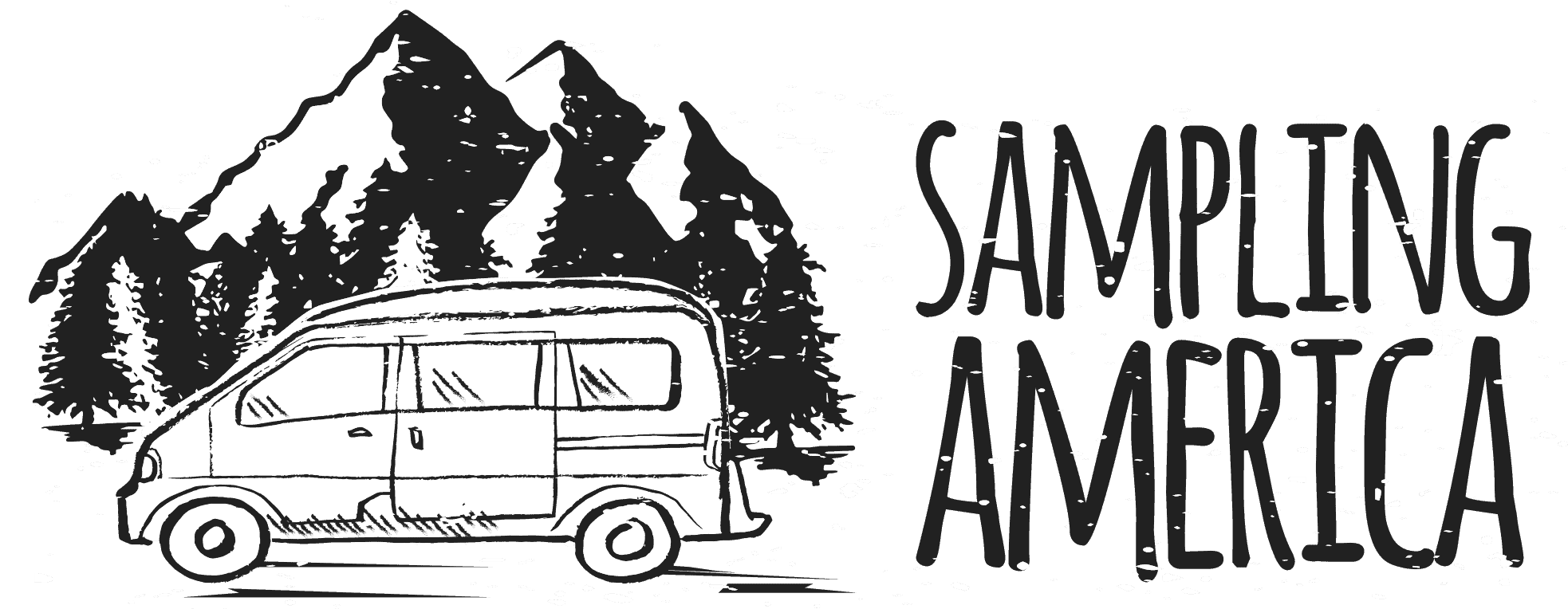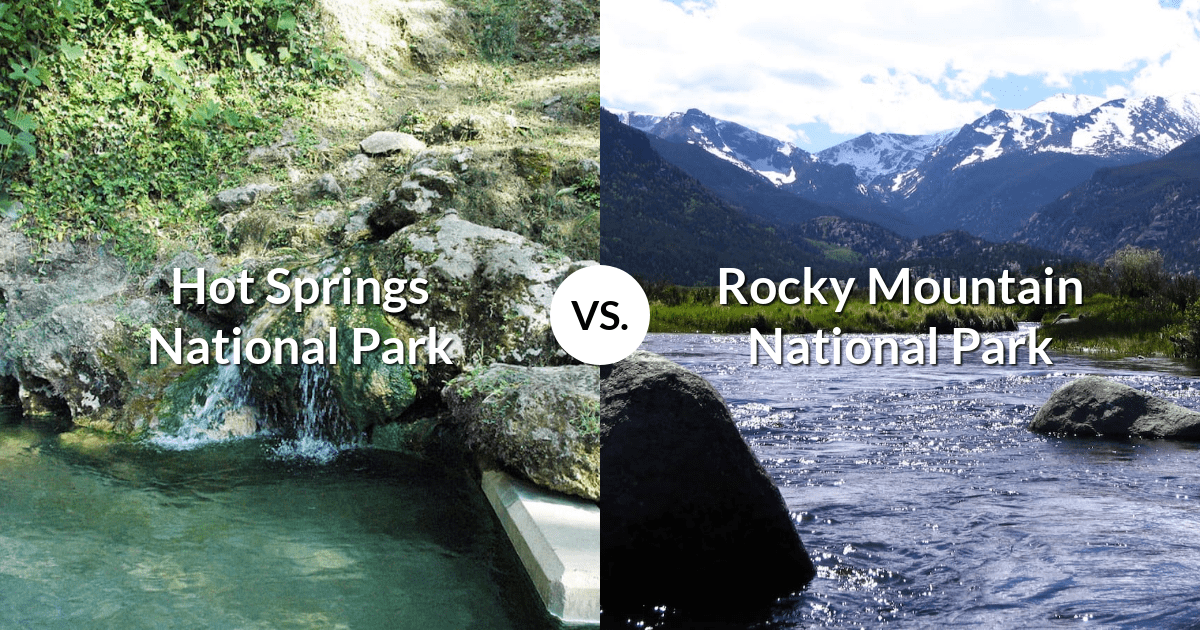Jake Cain is an entrepreneur and writer from Cincinnati, Ohio. He spends his free time driving around the country in his late 90’s conversion van, affectionately known as the “Monster Van” with his wife and 3 boys.
Are you torn between visiting Hot Springs National Park or Rocky Mountain National Park? Both parks offer breathtaking landscapes and unique experiences, but which one should you choose? In this article, we’ll compare the two parks and help you decide which one is the best fit for your next adventure.
Hot Springs National Park, located in Arkansas, is known for its hot springs and historic bathhouses. The park’s hot springs have been used for therapeutic purposes for centuries, making it one of the oldest parks in the National Park System. On the other hand, Rocky Mountain National Park in Colorado boasts some of the most stunning mountain views in the country, with over 300 miles of hiking trails, alpine lakes, and diverse wildlife.
So, are you in the mood for a relaxing soak in a hot spring or a challenging hike in the mountains? Do you want to explore the rich history of a park or immerse yourself in its natural beauty? Keep reading to find out which park is the perfect destination for your next trip.
Hiking Trails in Hot Springs National Park and Rocky Mountain National Park
Hot Springs National Park and Rocky Mountain National Park are two of the most popular national parks in the United States. Both are known for their stunning natural beauty and abundant hiking opportunities. However, the hiking trails at each park are quite different, offering unique experiences for visitors.
Hot Springs National Park is known for its hot springs, but it also offers a variety of hiking trails for visitors. One of the easiest hikes is the Hot Springs Mountain Tower Trail, a 1.5-mile hike that takes visitors to the top of Hot Springs Mountain for panoramic views of the surrounding area. Another popular hike is the Sunset Trail, a 3-mile hike that takes visitors through the park’s beautiful forest and along the creek.
Rocky Mountain National Park is known for its rugged terrain and challenging hikes. Some of the hardest hikes in the park include the Keyhole Route, a 12-mile hike with steep inclines and rocky terrain, and the Longs Peak Trail, a 14-mile hike that takes visitors to the summit of Longs Peak, the highest point in the park. For those looking for an easier hike, the Alberta Falls Trail is a 1.7-mile hike that takes visitors to a beautiful waterfall.
Regardless of the difficulty of the hike, visitors to both Hot Springs National Park and Rocky Mountain National Park are sure to be impressed by the natural beauty and unique experiences offered by these two parks.
Most Popular Hiking Trails in Hot Springs National Park
| Name | Length | Elevation | Type | Difficulty | Visitor Ratings |
|---|---|---|---|---|---|
| Sunset Trail | 20921.42 | 722.9856 | Hard | loop | 4 |
| West Mountain Trail | 3057.746 | 107.8992 | Moderate | loop | 4.5 |
| Goat Rock Trail | 3862.416 | 115.824 | Moderate | out and back | 4.5 |
| Gulpha Gorge Trail | 1931.208 | 116.7384 | Moderate | out and back | 4 |
| The Grand Promenade and Side Trails | 1931.208 | 33.8328 | Moderate | loop | 4 |
| Dead Chief Trail | 4345.218 | 121.92 | Moderate | out and back | 4 |
| Hot Springs Mountain Trail | 5310.822 | 204.8256 | Easy | loop | 4 |
| Peak Trail | 2092.142 | 108.8136 | Easy | out and back | 3.5 |
| Sugarloaf Mountain Via Sunset Trail | 11426.314 | 592.836 | Moderate | out and back | 4 |
| Goat Rock via Dead Chief Trail | 2092.142 | 87.7824 | Moderate | out and back | 4.5 |
Most Popular Hiking Trails in Rocky Mountain National Park
| Name | Length | Elevation | Type | Difficulty | Visitor Ratings |
|---|---|---|---|---|---|
| Emerald Lake Trail | 4988.954 | 215.7984 | Moderate | out and back | 4.5 |
| Sky Pond via Glacier Gorge Trail | 13035.654 | 537.972 | Hard | out and back | 5 |
| Gem Lake Trail | 4988.954 | 301.752 | Moderate | out and back | 4.5 |
| The Loch Lake Trail via Glacier Gorge Trail | 8690.436 | 326.7456 | Moderate | out and back | 5 |
| Alberta Falls Trail | 2574.944 | 76.8096 | Easy | out and back | 4.5 |
| Chasm Lake | 15127.796 | 792.7848 | Hard | out and back | 5 |
| Dream Lake Trail | 3218.68 | 129.8448 | Easy | out and back | 4.5 |
| Bear Lake Nature Trail | 1126.538 | 12.8016 | Easy | loop | 4.5 |
| Twin Sisters Peak Trail | 12070.05 | 766.8768 | Hard | out and back | 4.5 |
| Ouzel Falls via Wild Basin Trail from Sandbeach Lake | 11909.116 | 361.7976 | Moderate | out and back | 4.5 |
Wildlife in Hot Springs National Park and Rocky Mountain National Park
Hot Springs National Park and Rocky Mountain National Park are two of the most beautiful national parks in the United States. Both of these parks offer amazing opportunities to see a variety of wildlife, but they have different animals, birds and plants that are commonly seen.
Hot Springs National Park is known for its diverse wildlife, including white-tailed deer, armadillos, bats, and many species of birds. The park is home to a variety of habitats, including hot springs, forests, and grasslands. This diversity provides a habitat for many different species of animals and plants. Visitors to Hot Springs National Park may also see river otters, beavers, and even black bears.
Rocky Mountain National Park, on the other hand, is known for its elk population. Visitors to the park are almost guaranteed to see a herd of elk at some point during their visit. In addition to elk, visitors may also see moose, bighorn sheep, and a variety of birds, including golden eagles and bald eagles. The park is also home to a variety of plant species, including alpine wildflowers and conifers.
In conclusion, both Hot Springs National Park and Rocky Mountain National Park offer unique wildlife viewing opportunities. Whether you are interested in seeing deer, elk, or birds, both parks offer a chance to see a variety of wildlife in their natural habitats.
Below are lists of the most commonly spotted wildlife at Hot Springs National Park and Rocky Mountain National Park. However, you can see a full list of wildlife at each national park here.
Birds
| Hot Springs National Park | Rocky Mountain National Park |
|---|---|
| Peregrine Falcon | Peregrine Falcon |
| Northern Harrier | Northern Harrier |
| Sharp-Shinned Hawk | Sharp-Shinned Hawk |
| Osprey | Osprey |
| Tree Swallow | Tree Swallow |
| Mallard | Mallard |
| Canada Goose | Canada Goose |
| Lincoln’s Sparrow | Lincoln’s Sparrow |
| Ruby-Crowned Kinglet | Ruby-Crowned Kinglet |
| American Robin | American Robin |
| Great Horned Owl | Great Horned Owl |
| Red-Tailed Hawk | Red-Tailed Hawk |
| Northern Flicker | Northern Flicker |
| Merlin | Merlin |
| Barn Swallow | Barn Swallow |
| Savannah Sparrow | Savannah Sparrow |
| Great Blue Heron | Great Blue Heron |
| Hermit Thrush | Hermit Thrush |
| American Kestrel | American Kestrel |
| Bald Eagle | Bald Eagle |
| Song Sparrow | Song Sparrow |
| European Starling | European Starling |
| Northern Pintail | Northern Pintail |
| American Wigeon | American Wigeon |
| Green-Winged Teal | Green-Winged Teal |
Mammals
| Hot Springs National Park | Rocky Mountain National Park |
|---|---|
| Coyote | Coyote |
| American Beaver | American Beaver |
| Muskrat | Muskrat |
| Big Brown Bat | Big Brown Bat |
| Bobcat | Bobcat |
| Striped Skunk | Striped Skunk |
| Little Brown Bat | Little Brown Bat |
| Deer Mouse | Deer Mouse |
| Raccoon | Raccoon |
| Black Bear | Black Bear |
| Silver-Haired Bat | Porcupine |
| Hoary Bat | Silver-Haired Bat |
| Red Fox | Hoary Bat |
| Long-Tailed Weasel | Red Fox |
| House Mouse | Long-Tailed Weasel |
| Mink | Mountain Lion |
| Gray Fox | Mink |
| North American River Otter | Mule Deer |
| Brazilian Free-Tailed Bat | Gray Fox |
| White-Tailed Deer | Gray Wolf |
| Virginia Opossum | Long-Legged Myotis |
| Eastern Red Bat | Long-Eared Myotis |
| White-Footed Mouse | Badger |
| Norway Rat | Ermine |
| Eastern Cottontail | Snowshoe Hare |
Amphibians
| Hot Springs National Park | Rocky Mountain National Park |
|---|---|
| Bullfrog | Northern Leopard Frog |
| Tiger Salamander | |
| Wood Frog |
Fish
| Hot Springs National Park | Rocky Mountain National Park |
|---|---|
| Largemouth Bass | Rainbow Trout |
| Green Sunfish | Brook Trout |
| Bluegill | Brown Trout |
| Fathead Minnow | Western Longnose Sucker |
| Golden Shiner | Mottled Sculpin |
| European Carp | Speckled Dace |
| Yellow Bullhead | Cutthroat Trout |
| Graceful Catfish | |
| Black Crappie | |
| Black Bullhead | |
| Mosquitofish | |
| Creek Chub | |
| Brown Bullhead | |
| Goldfish | |
| Smallmouth Bass |
Reptiles
| Hot Springs National Park | Rocky Mountain National Park |
|---|---|
| Western Terrestrial Garter Snake | |
| Western Rattlesnake | |
| Eastern Fence Lizard |
Insects
| Hot Springs National Park | Rocky Mountain National Park |
|---|---|
| Orange Sulphur | |
| Painted Lady | |
| Monarch | |
| American Lady | |
| Red Admiral | |
| Mourning Cloak | |
| Cabbage White | |
| Silvery Blue | |
| Common Checkered-Skipper | |
| Clouded Sulphur | |
| Variegated Fritillary | |
| Buckeye | |
| Commom Wood Nymph | |
| Purplish Copper | |
| Anise Swallowtail | |
| Gray Hairstreak |
Beautiful Landscapes in Hot Springs National Park and Rocky Mountain National Park
Hot Springs National Park in Arkansas is famous for its 47 thermal hot springs, which have made it a popular destination for visitors seeking to relax and rejuvenate in the warm waters. The springs are surrounded by lush forest landscapes, making it a peaceful and serene environment. The park’s main attraction, Bathhouse Row, is a historic district that features eight historic bathhouses that offer a unique look into the past. Visitors can also enjoy scenic drives and hiking trails, including the Hot Springs Mountain Tower, which offers a breathtaking view of the surrounding landscape.
Rocky Mountain National Park in Colorado is renowned for its towering peaks, alpine lakes, and diverse wildlife. The park is home to over 60 mountains that rise over 12,000 feet, providing visitors with stunning views from various overlooks and scenic drives. The park is also known for its diverse wildlife, including elk, bighorn sheep, and moose, which can often be seen grazing in the meadows. The park’s most famous attractions include the Trail Ridge Road, a scenic drive that reaches an elevation of over 12,000 feet, and the popular destination of Bear Lake, a stunning alpine lake surrounded by towering peaks.
Things To-Do and Activities in Hot Springs National Park and Rocky Mountain National Park
Hot Springs National Park and Rocky Mountain National Park are two of the most popular national parks in the United States. Both parks offer a variety of popular activities for visitors to enjoy, but there are some key differences between the two.
At Hot Springs National Park, visitors can enjoy the hot springs, which are the main attraction of the park. They can also tour the historic bathhouses, take a scenic drive, go birdwatching, or hike on the various trails.
On the other hand, Rocky Mountain National Park is a hiker’s paradise. Visitors can hike to the top of the mountains for panoramic views, enjoy scenic drives, go horseback riding, and participate in ranger-led programs. The park is also home to a variety of wildlife, including elk, bighorn sheep, and moose, making it a popular destination for wildlife viewing.
Both parks offer beautiful scenery and a chance to connect with nature, but the main difference between the two is the focus on hot springs versus hiking. Hot Springs National Park is ideal for those looking for a relaxing soak in the hot springs, while Rocky Mountain National Park is perfect for outdoor enthusiasts who love to hike and explore the mountains.
Best Time to Visit Hot Springs National Park and Rocky Mountain National Park
Hot Springs National Park and Rocky Mountain National Park are two of the most popular parks in the United States. These parks are known for their unique beauty and have a number of seasonal weather patterns that impact when they are the best to visit.
Hot Springs National Park is located in Arkansas and has a subtropical climate with hot summers and mild winters. The park is located in a low-lying area, and temperatures can reach up to 100°F during the height of summer. This makes spring and fall the best time to visit, when temperatures are more moderate.
Rocky Mountain National Park, on the other hand, is located in Colorado and has a mountain climate with cold winters and mild summers. The park is located at a high altitude and temperatures can reach below freezing in the winter, making it a popular destination for winter sports such as skiing and snowboarding. The best time to visit the park is during the summer months, when temperatures are mild and the park’s high altitude wildflowers are in full bloom.
Both parks have different weather patterns, and each one is at its best during different times of the year. Hot Springs National Park is best visited in the spring and fall, when temperatures are moderate, while Rocky Mountain National Park is best visited in the summer, when temperatures are mild and the wildflowers are in full bloom.
Family Friendliness of Hot Springs National Park and Rocky Mountain National Park
Hot Springs National Park and Rocky Mountain National Park are two of the most family-friendly parks in the United States. Both parks offer a variety of outdoor activities, stunning natural beauty, and opportunities to learn about the environment. However, there are some differences that make one park more suitable for families than the other.
Hot Springs National Park is a great choice for families because of its easy-to-access hot springs, scenic drives, and well-maintained trails. The park has several bathhouses where visitors can soak in the hot springs, which are known for their therapeutic properties. The park also has several picnic areas and playgrounds, making it a great place for families to relax and spend quality time together.
Rocky Mountain National Park, on the other hand, is a great choice for families who are looking for a more rugged outdoor experience. With its towering mountains, vast forests, and crystal-clear lakes, this park offers a range of activities for families, including hiking, fishing, and wildlife watching. However, the park’s high elevation and challenging terrain can make it difficult for young children, so families with small children may want to choose a different park.
In conclusion, both Hot Springs National Park and Rocky Mountain National Park are great options for families looking to explore the great outdoors. However, if you’re traveling with young children, Hot Springs National Park might be the better choice, while families with older children and a thirst for adventure may prefer Rocky Mountain National Park.


